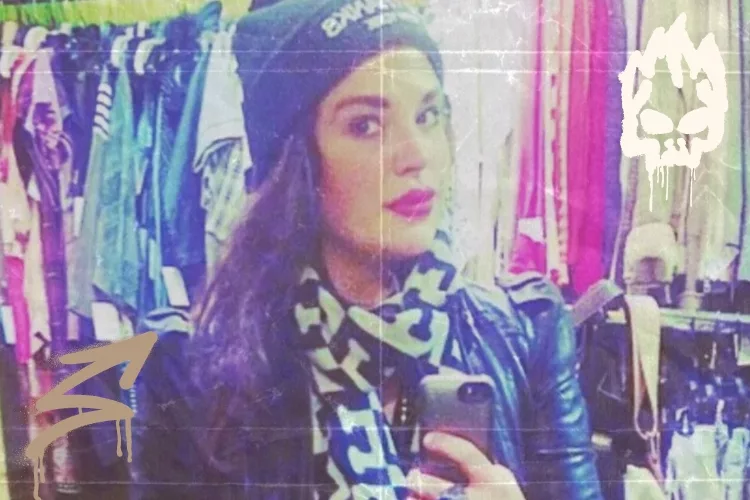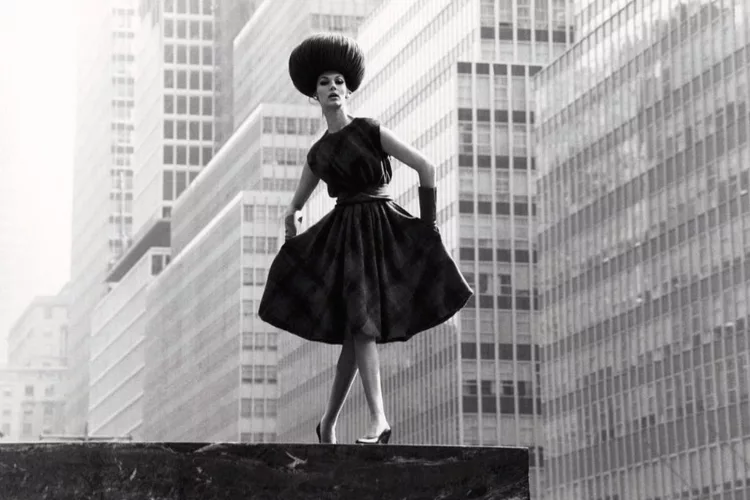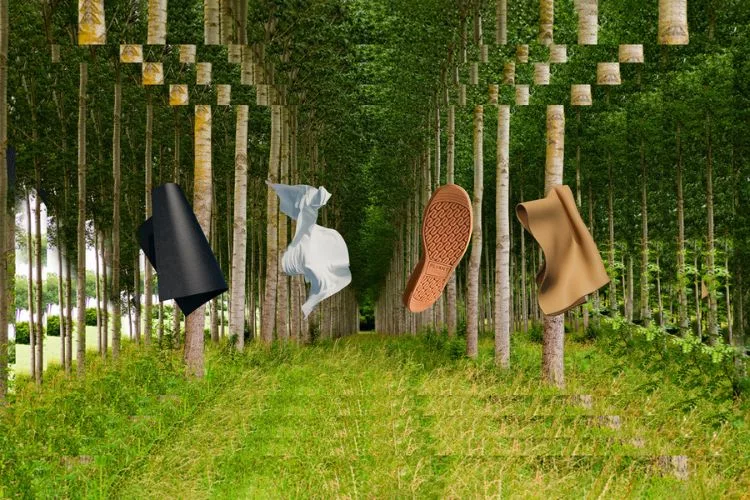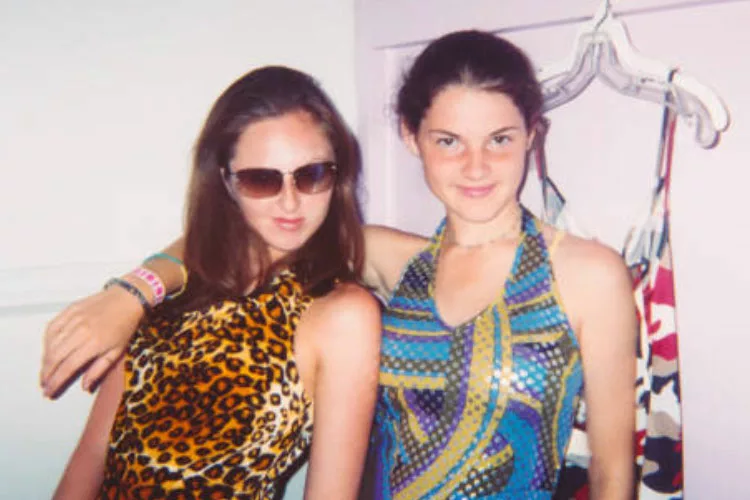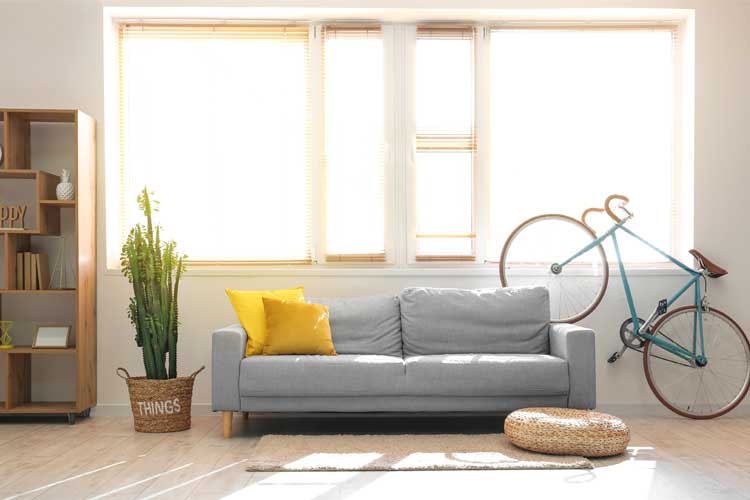
At its core, to be a minimalist is to be a responsible human
Over the past two years, we’ve all had to come up with new ways to pass the time – learning piano, baking bread, YouTube yoga. Perhaps the most widespread pandemic activity, though, was some variation of cleaning out the closet. In tribute to the woman behind The Life Changing Magic of Tidying Up, folks began “kondo-ing” their sock drawers, closets, and in some cases, entire lives. Across the world, we embraced the ‘less is more’ mantra, and flooded Instagram with photos of our new and improved, stark and monochromatic spaces. Accompanied always by the token #minimalism.
Minimalism is Seemingly Everywhere…& Extra
For a word that suggests as little as possible, it’s come to encompass an infinite variety of things. It’s fashion, home decor, lifestyle, art, a curated social media aesthetic. It manifests in tidiness, emptiness, sunlit white walls, anything rose quartz, and restored vintage bicycles. Kim Kardashian West recently described her $60 million house as a minimalist monastery. The thread that seems to tie all of these things together? They’re all on display.
When did minimalism become so luxe? The concept itself is thousands of years old, and you know the Buddhist monks weren’t thinking about KKW’s mansion when they first contemplated the joys of living with less. Historically, minimalism tells us to rethink our surroundings – to find meaning and beauty in the routine and ordinary, to appreciate the wonder of what we already have. The artists associated with the minimalist movement of the 1960s (a term they hated, incidentally, because they felt it implied that their art was somehow lesser) created work that demanded we look at single objects for and of themselves. To appreciate them as they are, without decoration or ornamentation. Somehow, we have inverted the relationship. Now the object is us –so look at us!
My problem with minimalism isn’t the aesthetic
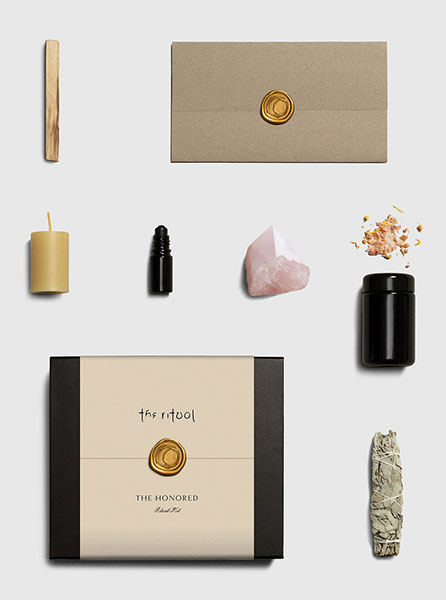
In fact, I’m a sucker for it. I cop to owning a jade plant that lives next to a white picture frame on the floating shelf next to my bed. I’ve perused the (somewhat counter-intuitive) KonMari shopping site, and want most of the stuff. I like good lighting and clean lines as much as anyone. My problem is the shameless contradiction between the tradition’s philosophy of living only with what you need, and late stage capitalism’s appropriation of it for conspicuous consumption and profit.
Sure, you should live with less stuff, but that makes it even more important to have the right less stuff. Which you can find either at our flagship store or through our paid partnership with Amazon. (or so say the websites extolling minimalism’s virtue)
Saving the evils of Big Tech for another day( as well as the unpleasant question of where all the old stuff we threw away has ended up) the big problem with most contemporary interpretations of minimalism is that they are remarkably self-centered. Shop well and toss what doesn’t spark joy, and your home will be perfect and you will be happy.
There’s a more useful way of understanding minimalism, and it’s not about living with less stuff or the right stuff
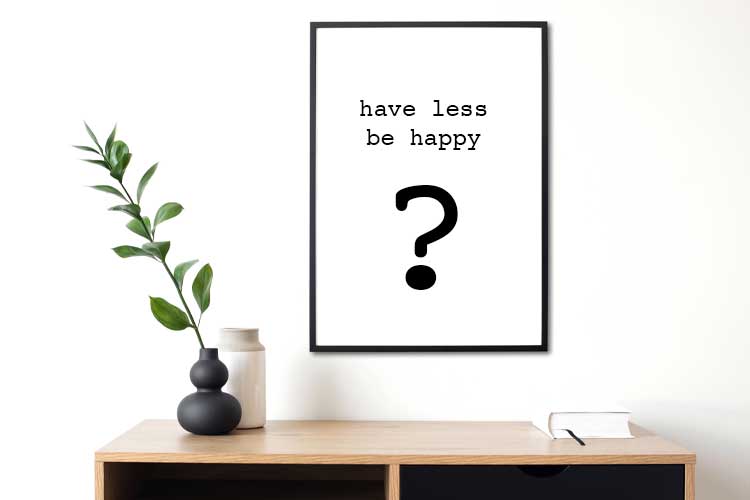
Minimalism, for me, is an awareness that all stuff is part of a continuum on a planet we all share. It is in our interest to respect it and manage our shared space as best we can.
In this sense it’s not so much about ‘making space for what truly matters’. It is recognizing that all things matter and need to reside somewhere. It tells us to accept and engage with things as they are, rather than manipulate them into resembling that cool thing we saw on Pinterest. It asks that we treat all possessions with respect and provide a good home for them. And when the time comes where we have to part ways, do it nicely and respectfully.
Incidentally, we want to avoid too many break-ups – they’re painful! So try not to make a habit of buying on impulse. It’s kind of like going home with just anybody you happened to meet at the bar – they might seem less attractive in the morning.
At its core, to be a minimalist is to have a thoughtful approach to life, not just things. An ethic of “pack in, pack out,” of being in the world without despoiling it. As the actions of others have affected my environment, so too am I responsible for how I interact with the reality that surrounds me. Recently that’s meant bleak climate change, a global pandemic and its ensuing hangover, and as of a few weeks ago, a devastating war. It’s no wonder so many of us crave a cleanse or fresh start.
But throwing away old books and replacing them with a sage-infused candle won’t help much. The real challenge comes when we leave our white washed sanctuaries, and confront the world that disheartens us. That kind of discipline isn’t always easy or pretty or cozy, and it doesn’t come with Prime Delivery. But it will continue to light our spaces long after the candle burns out.
–Stephanie Lawson
Related Articles
Anna Sacks aka The Trashwalker is showing us the treasures NYC throws awa
Seven simple switches for a more environmentally friendly home
Listen Up! Our favorite podcasts on ethical, responsible & sustainable fashion
Five ideas for self care when everything feels like too much
Florida’s “Don’t Say Gay” bill: What it is and what we can do about it.


